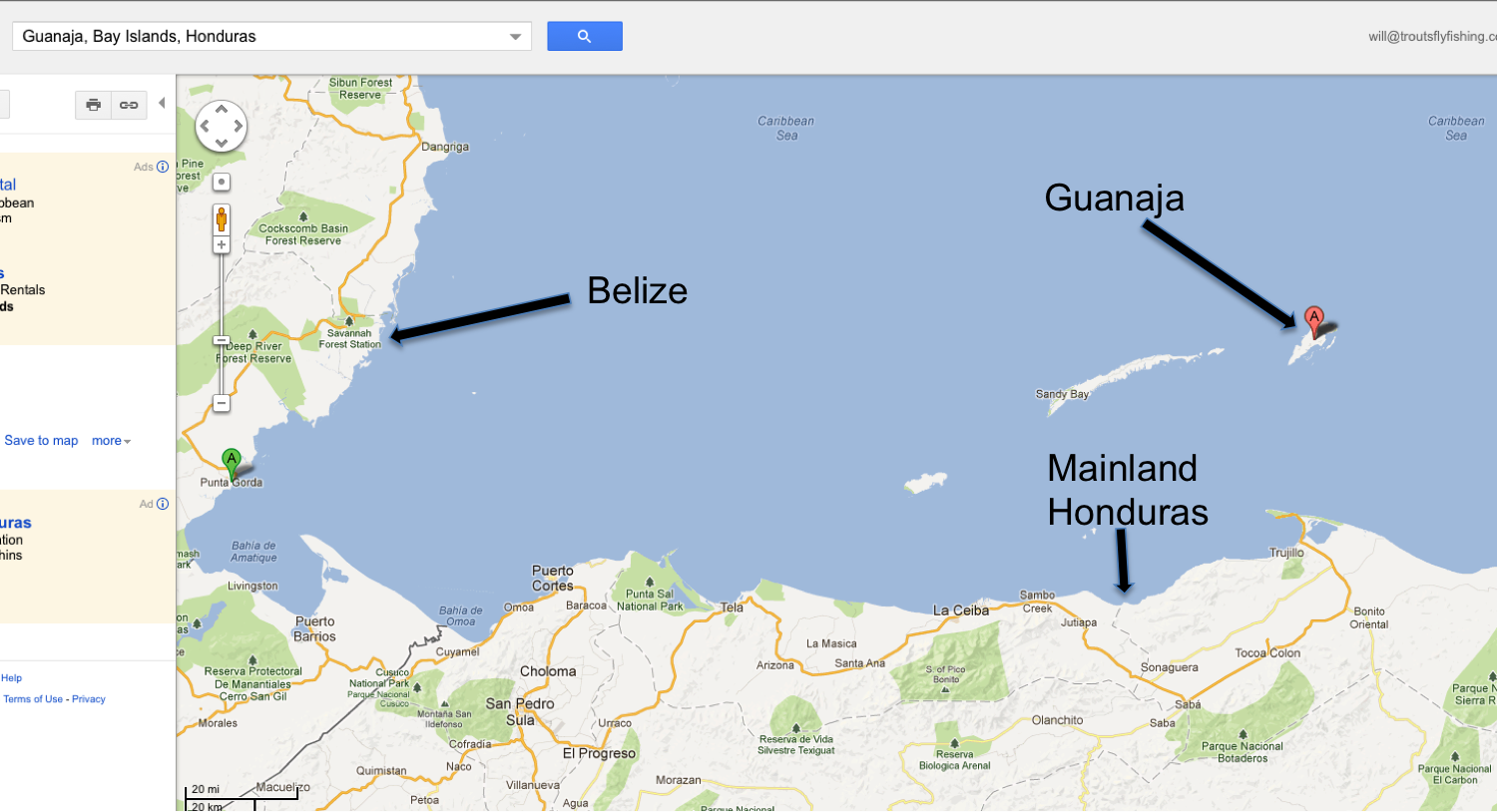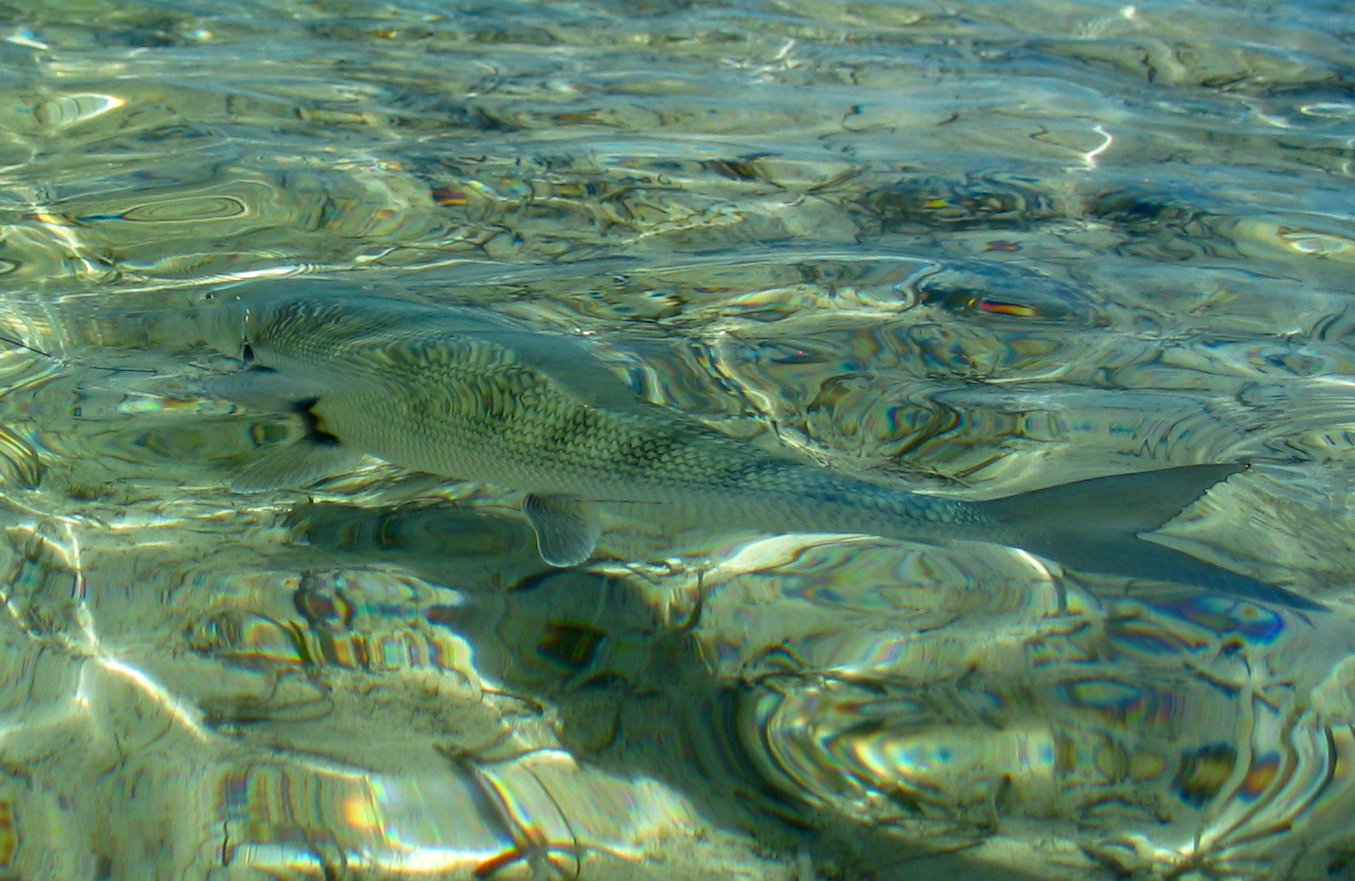
When I was told to pull up Google Maps and pick a fly fishing location it didn’t take me long. A few months prior to receiving my marching orders, I had a conversation with 2013 Carpslam partner and owner of our guide service, Clint Packo. Clint told me about small lodge on the island of Guanaja that he was preparing to open for hosted excursions.
The trip had a do-it-yourself feel, easy access to flats, and because of the island’s remote location, seemed to be a bit more off the radar than other destinations I had visited before. Bonefish and permit can be stalked as sight fishing targets and Clint had plans to further explore new areas of the island for snook and tarpon.
Done, done and done. Sign me up.
The island of Guanaja lies roughly 40 miles north of mainland Honduras and is situated 7 miles of east of Roatan, its’ nearest Caribbean island neighbor. Punta Gorda Belize is located roughly 200 miles to the east of Guanaja. The primary industry and source of income for local islanders is fishing and shrimping as the warm clear waters surrounding the island support an extensive coral reef.
From a species perspective, I’m hopeful that I will get a shot or two at permit. I haven’t had a lot of luck with permit in the past. As it stands right now, the scoreboard reads:
Permit: 11
Will: 0
Not that I keep score or anything…
I’ve recently heard some folks grumbling about bonefish – especially small bonefish that are not from the Bahamas. I’m not sure if this is some kind of new trend or I’m just hanging out with people who get to go flats fishing way too much. My guess is most likely the latter. I have to say that I’m pretty excited to get a shot at any species that can make a reel hiss and show me my fly line backing in a single blistering run.

Bonefish released
The exploratory nature of the mission gets me pretty fired up. Right now the game plan is to drop two anglers off each day on the flats and then explore the mangroves from a panga for snook, tarpon and anything else that swims. For me, this includes keeping a keen eye out for barracuda (yet another species that gets a bad rap). Wire bite tippet? Check.

Finning tarpon
In general we'll get four days on the water, no guides – just eyeballs and gear. My fingers are crossed for good weather.
From an equipment perspective, I’m bringing down a Ross RX 8 wt and a Sage Response 9 wt. I have a back up St. Croix Imperial 8 wt in case something goes dreadfully wrong – which for me, happens more often than not. In the reel department, I’ll be carrying a Sage 4280 and a Ross F1. For the most part, this is all brand new gear and I’m interested to see how it performs. Keep your eye out down the road for a few detailed post trip gear reviews.
I’ve been tying up some experimental patterns – mostly shrimp imitations. I did have the foresight to commission a dozen flies from our friend Scott Spooner who works up at the Taylor Creek Fly Shop. Here is the recipe for the “Spooner Shrimp” and some great photos taken by Kirk Webb.





.JPG)







I'd like to give a big shout out to Scott and Kirk and say "thanks" for sharing this recipe with me and all of our customers.
The Spooner Shrimp
Materials:
Any salt hook of your preference is fine
140 denier thread in tan, olive or pink
Medium bead chain eyes or barrel eyes
Small black bead chain eyes
Deer Hair
Flat Diamond braid- Pearl
Hareline Fly Enhancer rubber legs (light blue/pumpkin)
Spanflex in olive, tan or pink
Marabou in olive, tan or pink
Extra Select craft fur in olive, tan or pink
Brown marker
Tying Directions
1. Lay down some thread, tie in bead chain or barrel eyes at the 2/3 point of the hook shank (near the middle) Add a drop of glue.
2. Tie in rubber legs, leave the blue near the tips. Tie them down the shank and stop at the curve of the hook.
3. Tie in a small amount of unstacked deer hair at that same point, trim excess.
4. Tie in a 5 inch strand of flat diamond braid behind the bead/barrel eyes and tie down to the same point as the previous three materials
5. Tie in small black bead chain eyes, leaving space for the flat braid to wrap on either side of these eyes.
6. Tie in first, second and third spanflex legs down the shank towards the eye. These need to be on the SIDE, and you must leave enough space between each set of legs to eventually wrap the flat braid around and through. You want these legs to lay in a forward fashion, like a Veverka’s Mantis Shrimp.
7. Wrap the flat braid back towards the eye of the hook and tie down just behind the bead/barrel eyes. Wraps go around the legs and usually help the spanflex lay in that forward fashion. Similar to wrapping chenille around a Pat’s.
8. Flip fly over and tie in a puff of olive, tan or pink marabou over the bead/barrel eyes.
9. Trim marabou close, then wrap the rest of the flat braid forward and trim it. Leave room near the hook eye for the next step. Flip fly over.
10. Tie in a small bunch of extra select craft fur, about twice the length of the hook, trim close and whip finish.
11. Add some barring with the brown marker, thicker stripes near the hook eye, thinner stripes towards the tips of the craft fur. 5 bars or so.
12. Glue around the eye and you’re done.
Stay tuned for additional Guanaja trip preparation here on our blog.









.JPG)






